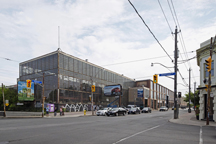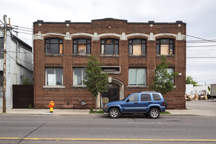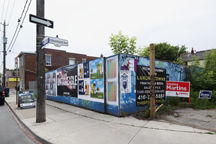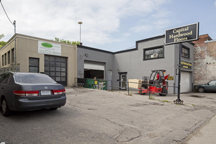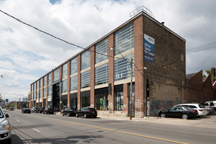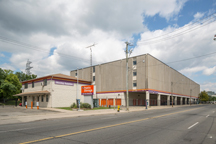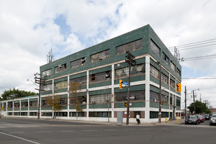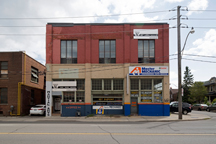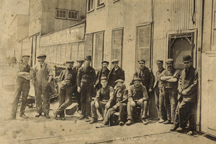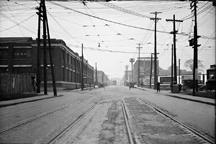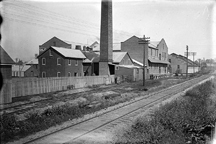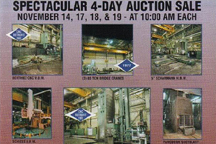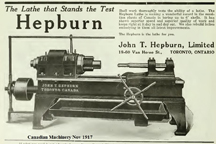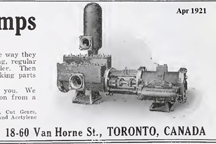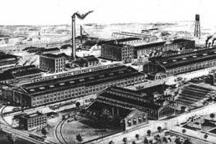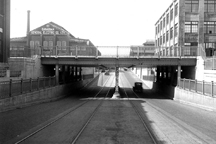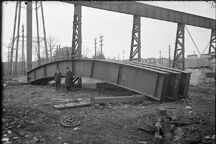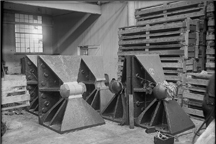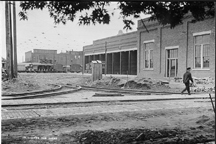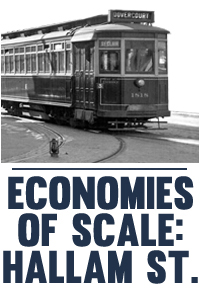The Hallam/Dovercourt neighbourhood, while primarily low-density residential, was situated in close proximity to a significant industrial manufacturing zone that developed in the late 19th/early 20th centuries along Lansdowne Ave. to the west and Dupont Ave. to the immediate north. As a 1971 City of Toronto Planning Board Study states: “Following the industry, came the inexpensively built [workers’] housing.” As well, the study notes that “the larger firms (each employing over 250 persons), draw a quarter of their workers from within a mile of their factories.” As of 1964 at least 4,500 of the larger companies’ 11,000 workers lived in the area.
The criss-crossing of public transit in this neighbourhood would have allowed workers from the area and across Toronto to get to their jobs at the large factories and smaller light industries located nearby. Canadian General Electric (CGE), John T. Hepburn, Hamilton Gear & Machine Co. (originally a Ford Motor Company plant that opened in 1916 at the corner of Dovercourt and Dupont) were just three of the major local employers – providing thousands of jobs until they all had closed their doors by the mid-1990s. The Canada Foundry Company (later acquired by CGE), which produced massive steel building components, had established its head office at Lansdowne and Dupont in 1902 as part of a huge industrial complex that originally covered 60 acres. As well, Canadian Aeroplanes Ltd. opened the only aviation factory in the country to build war planes in 1914 just south of the intersection of Dufferin and Dupont and employed 2000 workers at its height.
The 1971 City of Toronto Planning Board Study observes that the seeds of industrial decay in the area were already sewn by the time of its report when it observes that “Eventually, however, a stage must be reached when a building or area is completely obsolete and derelict. This stage is being reached in the Bloor-Dufferin area. Some buildings are lying vacant and new occupants difficult to find. This represents a problem which will increase in the future.” They were, unfortunately, right.
Industry History.


